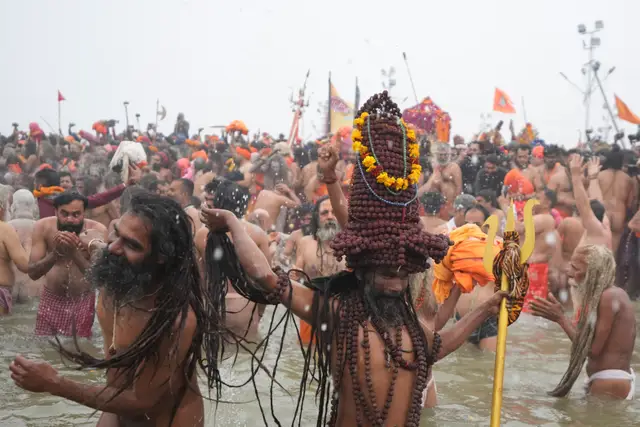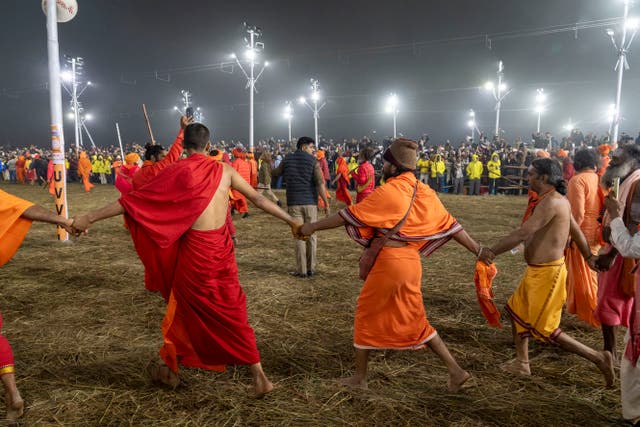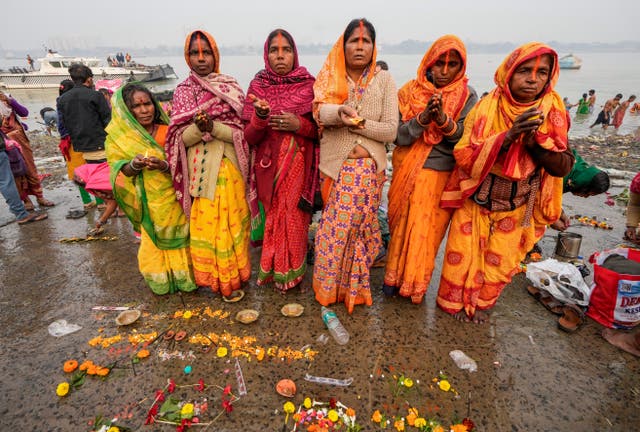Tens of thousands of naked Hindu ascetics and millions of pilgrims took dips in freezing water at the confluence of sacred rivers in northern India on Tuesday, in the first of a series of major baths in the Maha Kumbh festival, the largest religious congregation on Earth.
Holding tridents, swords, spears and small two-headed drums, ash-smeared Hindu holy men marched and rode chariots at sunrise toward the confluence of the Ganges, Yamuna and mythical Saraswati rivers in the northern city of Prayagraj.
The men – with matted dreadlocks and crowns of marigolds – chanted religious slogans praising Hindu deity Lord Shiva on the way to the bathing site in a large procession with singing, drumming and blowing of horns.
Millions of Hindu pilgrims followed them.

Over about the next six weeks, the festival is expected to draw more than 400 million people, many of whom will take part in elaborate rituals.
Hindus believe bathing at the confluence will cleanse them of their sins and release them from the cycle of rebirth.
Among the bathers was Venkatesh Ramaling, a tech specialist from southern Pune city.
“It is amazing to see how people are just diving in such cold water. People have such strong faith here, and looking at them I feel inspired,” he said. “After taking the bath, I feel really good and full of positivity.”

The Kumbh rotates among the four pilgrimage sites about every three years on a date determined by the cosmic alignment of the Sun, Moon and Jupiter.
This year’s festival is the biggest and grandest of them all.
Authorities have built a sprawling tented city on the riverbanks to accommodate the holy men, pilgrims and tourists visiting the festival.
The government has provided more than 765 million US dollars (£629 million) for the event, hoping to impress India’s largely Hindu population and draw visitors from around the world.
Stephen Barker, a New York-based artist who was at the festival, said: “It is some culmination, some distillation of so much spiritual pursuit, so it is fascinating to see everyone with one purpose.”

On Tuesday, millions thronged to the riverbanks, with some carrying clothes, blankets and food on their heads and others lugging wheeled bags.
Entire families and groups of people from faraway villages marched in huge lines as security personnel blared warnings to avoid stampedes that have marred the festival in the past.
Rajnish Diwedi, a senior police official who oversees security at the festival, said at least 2,700 cameras, some powered by artificial intelligence (AI), are being used to send crowd movement and density information to four central control rooms, where officials can quickly deploy personnel. Police are also using automated systems to avoid stampedes, he said.
Groups of Hindu ascetics have set up sprawling camps at the site, with tens of thousands of pilgrims visiting them to hear religious discourses and attend prayers. These ascetics – called Naga Sadhus – are part of religious orders that were once mercenary armies who generally revere Hinduism’s Lord Shiva.

“This is the holy place for salvation,” he said, adding that ascetics like him are “soldiers of the Hindu religion”.
“We safeguard our faith,” he said.
Bathing takes place every day at the site, but on the most auspicious dates Hindu ascetics charge towards the holy rivers at dawn.
Many pilgrims also stay for the entire festival, observing austerity, giving alms and bathing at sunrise every day.
The river baths, prayer, meditation and yoga sessions and other religious rituals are organised by Hindu ascetics and supported with public funds.






